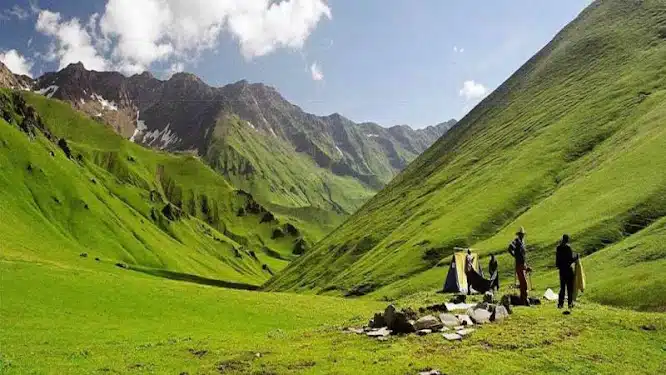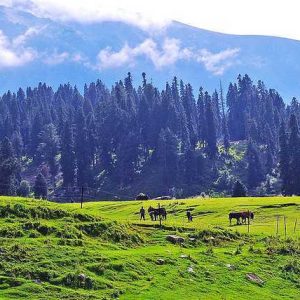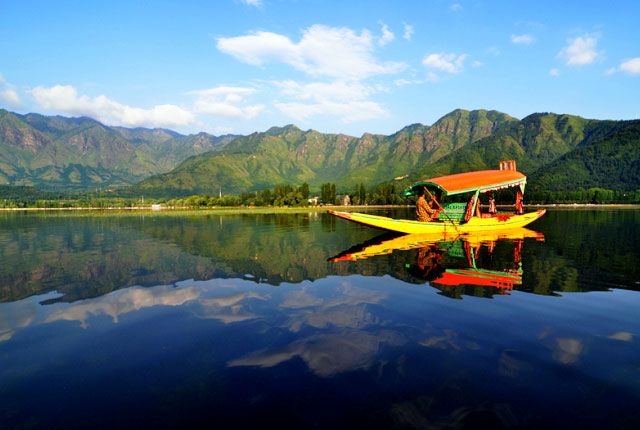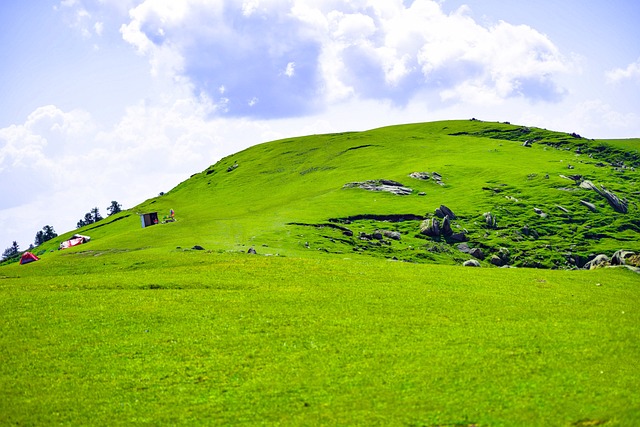
Best Time to Visit Doodhpathri
Table of Contents
ToggleOverview
Situated in Jammu & Kashmir’s Budgam district, Doodhpathri is popularly known as the “Valley of Milk” because of the dense green pastures and milky streams pervading the entire area. If you are organizing your holidays and want to find out when is the best time to go to Doodhpathri, here is a comprehensive guide that will guide you through the seasonal overview, attractions to visit, travel tips, and all else you need to know to get the most out of your Doodhpathri tourism.





Why You Must Visit Doodhpathri
Typically overshadowed by its tourists favorites like Pahalgam and Gulmarg, Doodhpathri offers an unspoiled paradise to nature lovers as much as adventure seekers. With its stunning scenery, pristine alpine meadows, and array of outdoors activities, every season in Doodhpathri unfolds a different facet of its beauty. From looking for the perfect “Doodhpathri Kashmir weather” or wanting a less-traveled destination, the valley promises peace from the tourist trails.
Knowing Doodhpathri's Climate Patterns
In order to schedule your tour based on the optimal time to visit Doodhpathri, you must be aware of the climate of the region:
- Spring (March–May): Gentle temperatures (10°C–20°C) transition into blooming and snowmelt.
- Summer (June–August): Good and warm weather (15°C–25°C) optimal for meadows, picnics, and family excursions.
- Monsoon (July–September): Intermititent rains signal greenery but interfere with trekking.
- Autumn (September–November): Crisp weather (5°C–18°C), blue skies, and brilliant fall color.
- Winter (December–February): Snowfall of heavy intensity (temperatures ranging between –5°C and 5°C) makes the valley a snow wonderland.
Best Time to Visit Doodhpathri: Season-by-Season Guide
Spring Magic (March to Mid-May)
In the melting of snow, the grasslands of Doodhpathri become a kaleidoscope of bright green hues with sea islands of wildflowers. This is when the valley wears its “Valley of Milk” nickname, with brooks looking like streams of fresh milk. Weather is pleasant and cool, perfect for photography, birding, and walking along the Doodhpathri trekking routes.
Summer Escapade (Late May to August)
Summer arrives with hot heat and clear blue skies—ideal for extended camping holidays, horse riding, and picnics in the open green meadows. The peak season sets in for Doodhpathri tour packages, and honeymooners and family groups flock here to bask in the tranquil beauty and avoid the heat of the plains.
Monsoon Greens (July to Early September)
Although the monsoon may deter a few, the intermittent rains give the valley a rich, emerald look. Subject to not disliking the odd rain shower, the scenery of the monsoon season is surprisingly green. Do remember that landslides occasionally affect road connectivity.
Autumn Serenity (October to November)
Post-monsoon, the Doodhpathri meadows turn golden and russet in color. The air is crisp and the nearly ideal climatic conditions make it one of the most favorable times to go to Doodhpathri for those in pursuit of solitude and crystal-clear wide-perspective views of the Pir Panjal range around.
Winter Wonderland (December to February)
Doodhpathri transforms into a snowy paradise. Though access can be challenging due to heavy snowfall, this season draws winter sports enthusiasts eager for snowball fights, snow trekking, and mesmerizing sunrise vistas on the snow-clad meadows. If you’re dreaming of a Doodhpathri snow festival, the winter months will not disappoint.
Top Activities and Experiences in Doodhpathri
- Meadow Strolls & Picnics: Wander through sprawling green fields, perfect for family outings and romantic getaways.
- Horse Rides: Pony and horse carriage rides with guides are available to the grassy meadows and gentle slopes.
- Trekking Expeditions: Experience short treks to near-by destinations like Gurez Valley, Mata Park, and Goswan Tract—the most suitable for experienced as well as beginner trekkers.
- Camping Under the Stars: Camp in remote open spaces and sleep to the sound of soothing mountain breezes.
- Bird Watching & Wildlife Sightseeing: Look out for Himalayan marmots, land pheasants, and migratory feathered birds.
- Winter Activities: In case of heavy snow, enjoy snowball combat, snowman construction, or plain peace of mind in the white surroundings.
How to Reach Doodhpathri
- By Air: Nearest airport is Sheikh ul-Alam International Airport, Srinagar, 45 km away.
- By Road: Doodhpathri is well connected with motorable roads to Srinagar and Budgam. This route is covered regularly by taxis, shared cabs, and tourist buses.
- By Rail: Closest railhead is at Srinagar (under construction) or Jammu Tawi (290 km away). You may hire a cab from there, or opt for a guided tour of Doodhpathri.
Accommodation Options
- Luxury Resorts & Hotels: Some luxury resorts around Ajas village provide high-end facilities, spa, and scenic views of the meadows.
- Mid-Range Guesthouses: Cozy family-owned guesthouses provide warm service, home-made meals, and cultural interaction.
- Budget Homestays & Camp Sites: For budget travelers or adventure seekers, local homestays and camping areas will be your lifesaver. Always pre-book in peak season for the best Doodhpathri tour packages.
Doodhpathri Travel Packing Tips
- Layered Clothing: It can get hot and cold—carry light woollens, t-shirts, and a waterproof jacket.
- Footwear: For hiking and walking on uneven terrain.
- Sunscreen: Sunglasses, hats, and high-SPF sunscreen during sunny days.
- Raincoat: A lightweight umbrella or poncho during monsoon.
- Camera & Binoculars: To enjoy the stunning views and spot wildlife from a distance.
Local Cuisine and Delicacies
Don’t miss the Kashmiri food such as Gushtaba, Rogan Josh, Kahwa tea, and trout fish available here. Most of the guesthouses provide Wazwan traditional foods which give one more spin to your Doodhpathri trip.
Cultural Tact and Eco-Tourism
- Respect local culture—dress modestly, particularly in villages.
- Avoid taking photos of people without permission, especially in rural areas.
- Avoid littering and carry refillable bottles and opt out of plastic to maintain the valley’s virgin landscape.
- Tip guides and hotel staff reasonably; tourism benefits indigenous communities.
FAQ: Planning Your Doodhpathri Expedition
Q: Can I visit Doodhpathri throughout the year?
A: Roads are open from late spring to early fall; snow may limit winter access.
Q: Do I require a permit to travel to Doodhpathri?
A: No special permits are needed; valid ID documentation is sufficient.
Q: Do mobile networks and internet facilities exist?
A: Basic 4G connectivity is found around the main meadows; patchy service may be found in more outlying areas.
Q: Are there vegetarian food options?
A: Yes—local guesthouses and dhabas offer vegetarian thalis as part of their menu alongside meat-based ones.
Insider Tips for an Unforgettable Trip
- Early Mornings: Experience the magical sunrise when meadows are bathed in golden light and mist hangs on rivulets.
- Stay Local: Go for homestays to get a taste of Kashmiri hospitality, home-cooked meals, and customized tips on the area.
- Off-Peak Visits: Visit Kashmir between late Sept to early Oct to escape peak season tourist crowds but get pleasant weather.
- Pack Snacks: Cafes are scarce; pack dry fruits and energy bars for long hikes.
- Cultural Immersion: Go to a local concert or bonfire night to experience real flavor of Kashmiri culture.
Conclusion: Grab the Opportunity in Doodhpathri
Whether you’re chasing spring blossoms, summer sunrises, autumn hues, or a blanket of snow, Doodhpathri stands out as one of the best offbeat destinations in Kashmir. By choosing the best time to visit Doodhpathri that aligns with your interests—be it wildlife spotting, photography, or serene relaxation—you’ll create memories that last a lifetime. So pack your bags, set your itinerary, and prepare to be enchanted by the “Valley of Milk” on your next Kashmir adventure!
How to book Kashmir tour?
Contact a travel agency that specializes in Kashmir tours. You can reach out to the following for assistance:
- Phone:
- +91 7889 655596
- +91 7006 891267
- Email:
Inquire about tour packages, itineraries, and pricing, and confirm your booking for a memorable winter experience!
People Also Ask
What is the best time to visit Doodhpathri?
The ideal period is from late April to early June and September to October, when the meadows are lush, the weather is mild (10 °C–25 °C), and skies are clear for sightseeing and trekking.
How do I reach Doodhpathri from Srinagar?
The most convenient way is by private taxi or shared cab from Srinagar Airport or city center, covering approximately 45 km via Budgam–Ajas road in about 1.5–2 hours.
Do I need any special permits to visit Doodhpathri?
No special permits are required. A valid government-issued ID (like an Aadhaar card or passport) is enough to enter and explore the valley.
Is Doodhpathri accessible during winter?
Roads are often blocked by heavy snowfall from December to February, so winter access is limited; only experienced snow trekkers with local guidance should attempt it.
Which activities are popular in Doodhpathri?
Horse riding, meadow picnics, short treks (e.g., to Mata Park), bird-watching, camping under the stars, and winter sports like snowball fights.
Are there guided tours available for Doodhpathri?
Yes—local operators offer day trips and multi-day Doodhpathri tour packages that include transport, lodging, meals, and guides for trekking and sightseeing.
What kind of accommodation is available in Doodhpathri?
Options range from luxury resorts near Ajas village and mid-range guesthouses to budget homestays and camping grounds right in the meadows.
How much should I budget for a 3-day trip to Doodhpathri?
A mid-range traveler can expect to spend between ₹8,000 and ₹15,000 per person, covering transport, accommodation, meals, activities, and incidental expenses.
Is it safe to travel solo in Doodhpathri?
Generally yes, especially in peak season. However, it’s wise to inform guesthouse hosts of your plans and hire a local guide for remote treks.
What clothing should I pack for Doodhpathri?
Layered clothing including t-shirts, light woollens, a waterproof jacket, sturdy trekking shoes, and accessories like sunglasses and a hat.
Are there any medical facilities in Doodhpathri?
Only basic first-aid is available locally. For serious medical care, it’s best to return to Budgam or Srinagar, where hospitals and clinics are well-equipped.
Can I use mobile internet in Doodhpathri?
Most major networks (Jio, Airtel) provide basic 4G coverage in main meadows; remote areas may have patchy service.
What wildlife can I spot in Doodhpathri?
Look out for Himalayan marmots, local pheasants, and a variety of migratory birds—ideal for wildlife photography and bird-watching.
Is camping allowed in Doodhpathri?
Yes, camping is popular. You can pitch tents in designated meadow areas; some tour operators include camping gear and meals in their packages.
How long should I plan to stay in Doodhpathri?
A minimum of 2–3 days is recommended to cover key attractions, enjoy meadow walks, and experience sunrise and sunset views without rushing.
Can I combine a Doodhpathri trip with other Kashmir destinations?
Absolutely—many travelers pair Doodhpathri with Gulmarg, Pahalgam, or Sonamarg on a week-long Kashmir itinerary.
What is the elevation of Doodhpathri?
Approximately 2,730 meters (8,957 feet) above sea level, offering cool temperatures and panoramic views of the Pir Panjal range.
Are there eateries or cafes in Doodhpathri?
A few small dhabas and guesthouse kitchens serve local Kashmiri dishes; carry snacks and water for long meadow treks.
What local delicacies should I try?
Don’t miss Kashmiri kahwa tea, Rogan Josh, Gushtaba, and locally caught trout—many homestays include Wazwan-style meals.
Is Doodhpathri child-friendly?
Yes—gentle slopes, safe meadows, and calm weather make it an excellent destination for families with children.
Can I visit Doodhpathri during monsoon?
Visiting during July–August is possible but expect intermittent rain. Roads remain open, but landslide risk can increase during heavy showers.
Do local guides speak English?
Most licensed guides speak basic English; they’re also fluent in Kashmiri and Hindi, ensuring smooth communication for non-local travelers.
What cultural etiquette should I follow in Doodhpathri?
Dress modestly, ask permission before photographing locals, remove shoes before entering homes, and always respect neighborhood customs.
How do I book accommodation in Doodhpathri?
Book through reputable travel websites or directly contact guesthouses and resorts—advance reservations are highly recommended during peak season.
Are there any festivals or events in Doodhpathri?
While there’s no fixed festival season, locals occasionally organize bonfire nights, cultural music sessions, and informal snow-play events in winter, offering authentic Kashmiri experiences.




